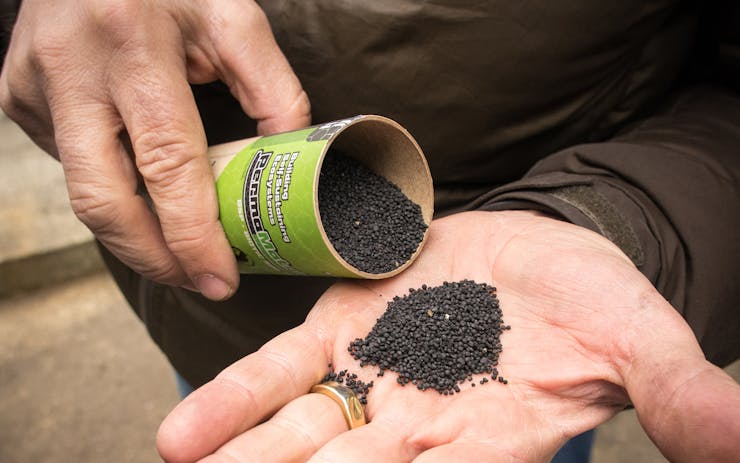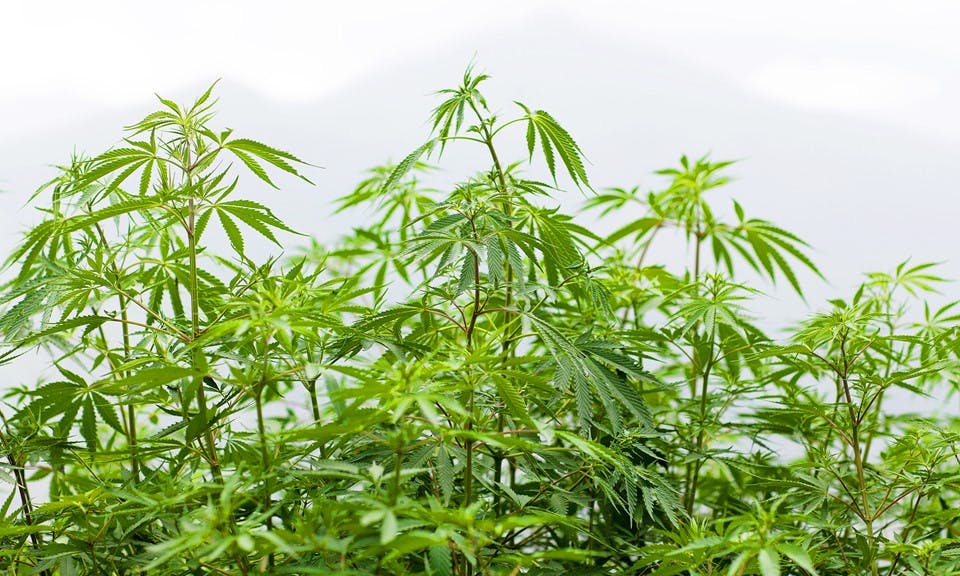Biochar has been used for centuries, and it’s making a comeback in the past few decades among farmers. Created in a process known as pyrolysis, biochar is a carbon-rich charcoal soil amendment that may help to address some modern environmental challenges.
To learn more about biochar and its impact on sustainable growing practices, we spoke with Miller Soils, who produces biochar-based blends out of Colorado.
What Are Biochar’s Benefits in the Garden?
Sunny Kaercher of Miller Soils describes biochar as “giving your soil food web a habitat.” In other words, the large surface area of biochar offers endless nooks and crannies for bacteria and fungi to live and develop, thus protecting and promoting growth of small organisms in your soil’s food web. These organisms are vital to a healthy soil by making nutrients available to your roots while also helping to boost the immune system of your plants.
Microorganisms are not the only things that occupy the surface area of biochar. Through a process known as CEC (cation exchange capacity), water and nutrients are both drawn to biochar. “Most of your major nutrients have a positive charge and water has a bipolar charge, while biochar offers a negative charge,” Kaercher told Leafly. “Because of this, the biochar attracts the nutrients and water. They want to link up.” This linkup ensures your soil holds onto the water and nutrients, keeping them available for your roots to intake as needed.
What’s the Difference Between Biochar, Charcoal, and Activated Charcoal?
Biochar shares similar properties with both charcoal and activated charcoal, but its unique properties better serve as a soil amendment. Charcoal is produced to be used as a carbon-rich fuel, while biochar harnesses carbon’s ability to provide large amounts of surface area. Biochar does not share the same bulk density or hardness as activated charcoal. In this way, it has less of a surface area than activated charcoal, but is easy to produce and work into your soil.
How Is Biochar Produced?
Biochar is produced in a kiln. This process can take place on a range of scales from DIY to an industrial plant. Regardless of the scale, biochar requires biomass (organic material) to be produced. This biomass can be sourced sustainably through forest fire fuel management work or from your own yard waste.
On a large scale, you can see the full benefits of biochar. Miller Soils generally uses large dead pine snags that were destroyed by the mountain pine beetle in Colorado. Once harvested, the snags are processed into chips that will be moved through the kiln where the biomass is baked. As the biomass bakes, it releases syngas (synthetic gas) that is captured and cleaned to fuel the kiln, or it can be used as a natural gas.
Small-scale farmers can build kilns that catch the gas being released from the biomass. These systems generally involve creating a fire around a metal container that will hold the biomass. Gas from the biomass is released and then caught to help fuel the fire, reducing the necessary input of heat.
What Are Biochar’s Environmental Benefits?
Forest Management
Biochar helps remove dead snags and biomass debris from forests. This plays a large role in forest fire management by removing fuel that is responsible for dangerous and devastating wildfires, especially in states like Colorado where debris is so abundant.
Shop highly rated dispensaries near you
Showing you dispensaries nearSequestering Carbon
Snags that are left in the forest not only provide fuel to wildfires, they also release high levels of CO2 gas into the atmosphere when they burn. By producing biochar, you’re putting carbon back into the earth in a stable form that will not release into the atmosphere while also providing a home for microorganisms to develop complex soils that further sequester carbon as the organisms live and die.
Soil Fertility
Biochar as an amendment helps to rebuild soil that has been eroded through industrial agriculture. Its presence aids in sequestering the organisms, nutrients, and water that help prevent the runoff responsible for nutrient blooms in our rivers, lakes, and oceans. Preventing runoff means fewer inputs, which helps save water, nutrients, and soil by ensuring what you put in is being preserved. Additionally, a healthy soil is a carbon sink; the plants pull CO2 from the atmosphere and sequester it in the soil, helping to lower the levels of CO2 in our atmosphere.
As an amendment that is easy and cost-effective to produce, biochar’s reach is endless. In regions of Africa, for instance, where soil fertility has been destroyed over the past century, biochar can help to start rebuilding these damaged soils while keeping the water and nutrients in the ground.
Do you have any experience working with biochar in your cannabis garden? Share your experience or questions in the comments section below.






